The biceps muscle is responsible not only for rotating the wrist and flexing the upper limbs, but also serves as an indicator of the power and beauty of the male body. If the biceps are underdeveloped and do not respond well to loads, you need to approach training in an inventive way. Gaining weight does not always lead to the desired result, but a properly designed comprehensive program will help increase volume. The bundles respond well to stimulation and after the first shock begin to increase in size.
For beginners, it’s best to start with dumbbell lifts. The muscle group should be loaded as much as possible, but heavy weights should be avoided. Arm curls with apparatus are relevant for boys and girls.
Lifting dumbbells with a turn
Basic technique for the development of biceps and forearm, deltas. Athletes use it for pumping and burning fat.
- Standing or sitting, we hold the shells in our lowered hands. Fingers point inward, elbows motionless.
- Holding your breath, we lift up to the shoulders, supinating the hand as much as possible. Rotating the wrist optimally reduces the tufts. Delayed or premature rotation will create unnecessary tension in the shoulder joint.
- Having reached the maximum, we extend the arm, turning the wrists in the opposite direction.
Since the emphasis is on accurate movement reproduction, choose shells with a comfortable weight (8×3).
Exercise “Hammer”
A modified technique for training the brachioradialis muscles and wrist extensors. Recommended for use at the end of the program.
- IP – arms with dumbbells are lowered down, hands are turned towards the body, triceps are pressed to the body.
- With the forearm stationary, bend the left arm until the bundles are completely contracted. The projectile should be on the shoulder line.
- Strongly straining the biceps, we pause for a short pause.
- We return the hand to IP.
- An action with both hands counts as 1 repetition. You need to make 8×3 of these takes.
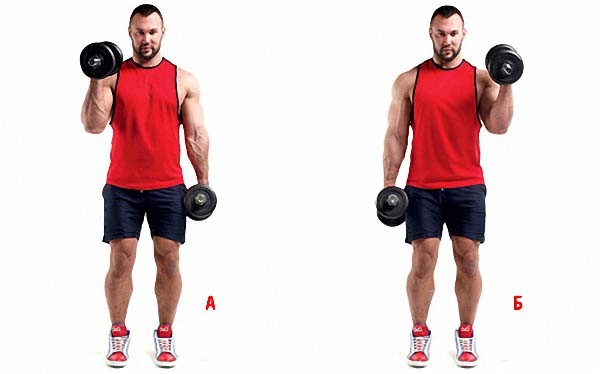
The exercise is not considered basic, so it makes no sense to take a lot of weight. The “hammer” can be done while standing, on a bench with support, or bending your arms alternately, at the same time. It is easier for beginners to master the alternating technique.
Scott Bench Raises
Isolation practice for the biceps muscle to give the biceps density, volume, and strength.
Involved brachialis, wrist flexors.
- Adjust the height of the backrest for the arms.
- We place the triceps at the top of the stand. If your back is weak, first we sit on the bench, then ask for the barbell.
- Use a wide grip to grab the EZ bar. A projectile with a bent profile will prevent overstrain of the forearm.
- The hands are facing forward, the knees are bent.
- We firmly fix the feet and back. Do not tear your elbows off the surface.
- Partially stretching the biceps, while inhaling, lower the barbell.
- Using the beams, we raise the barbell to the shoulder line. We do not bend the brushes. We do not pull the bar up – with optimal lifting, the abdominal muscles and back are included in the process.
- We linger in the top position for 2 seconds and lower the projectile down without a jerk.
- Repeat 10 times. We work with moderate weight.
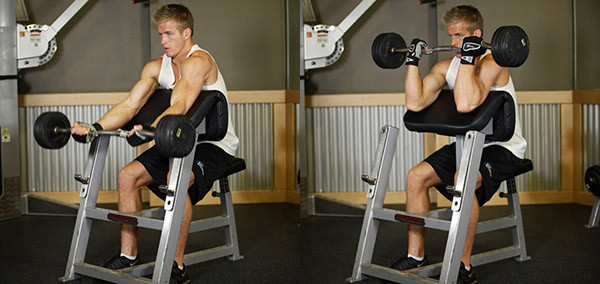
To shock the biceps, it is important to change the types of equipment, weight, and angles.
We take the bar with different grips. The distribution of the load depends on the position of the hands on the base:
- with the classic setting, the entire muscle is evenly loaded;
- with a narrow one, the focus shifts to a long beam, partly to a short one;
- in the wide position the emphasis is on the short head.
Reverse grip rows occur with a narrow hand position. This forces both beams to come into operation. Alternating, reverse curls are effective for gaining mass.
Barbell curl
A basic exercise for working out the biceps, serratus anterior, brachioradialis, and abdominal muscles.
- From the classic position we take the barbell – palms facing up, bar at hip level.
- We move our chest forward, move our shoulders back, and tighten our abs.
- To relieve tension from the quadratus dorsi muscle, bend your knees slightly.
- Using the strength of your biceps, pull the barbell up. The lifting trajectory resembles a semicircle.
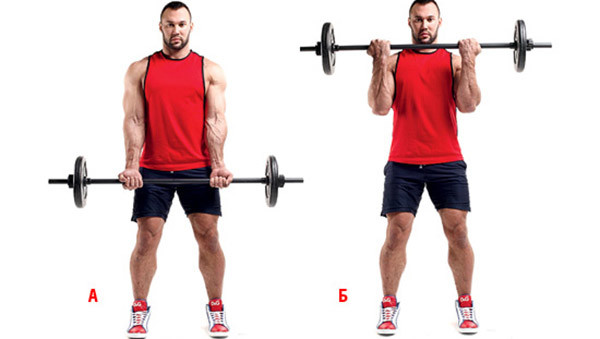
When lifting in a straight line, the biceps rests (10×3).
Deadlift on a step platform
Excellent muscle development.
Accent: arms, hamstrings, buttocks.
- We stand on a platform 10 cm high.
- We squat and grab the bar with a wide grip.
- By tensing the legs and back, we tear it off the floor.
- Straighten the body.

We return the projectile to its place, take a breath, repeat (6 times 4 sets).
Barbell row along the body
Accent: forearm, biceps.
- We take the barbell with a reverse grip. The elbows, attached to the body, are turned back.
- With straight shoulders, without breaking away from the body, pull the bar up.
- Without losing tactile contact with the body, we return to IP (6×3) in reverse order.
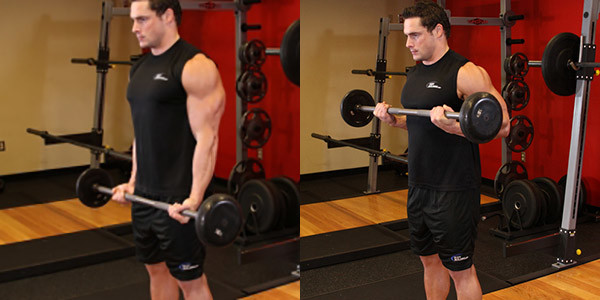
Lower block arm curls
We train on a block simulator. The target muscles are the brachialis and brachyradialis.
- Using an upper grip, we cling to the cable holder (EZ or straight bar) of the lower block.
- We press the triceps to the body.
- Keeping your forearms static, bend your arms with all the power of your biceps while exhaling until the bar is in the upper chest.
- After a short delay, lower (8×4).
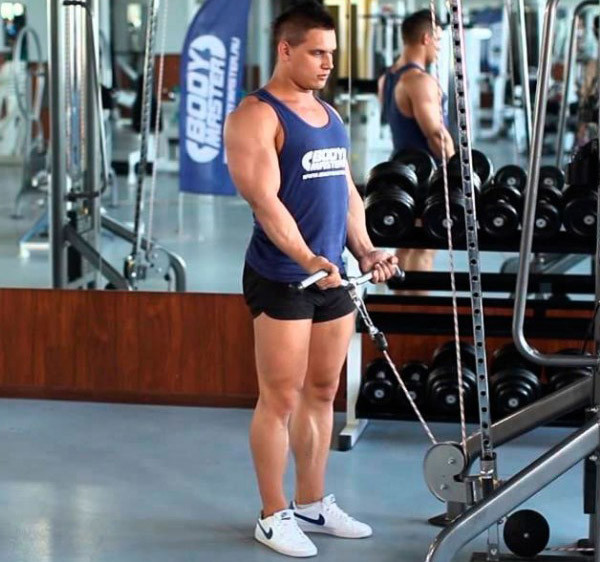
Crossover bends
Isolation exercise for biceps and mass.
Operating: pronator teres, brachioradialis, biceps.
We attach the handles to the upper cables and hold them with our palms facing up.
- We stand between the posts, bend our elbows, and pull the cable towards our head. Holding your breath will partially solve the problem of balance and help you focus on your muscles.
- When the hands reach the upper deltas, we exhale and increase the tension in the bundles. To increase contraction of the biceps muscle, bend your wrist as you approach the peak point.
- Exhaling, we return our hands to the starting position. The body is stable until the end of the set (15×4).
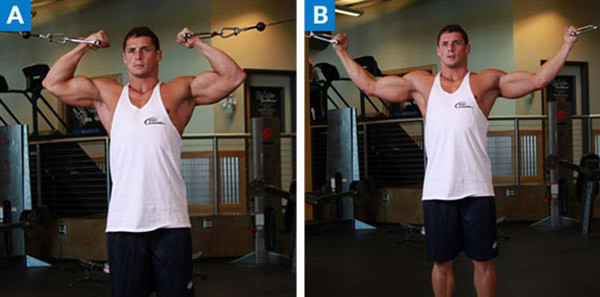
Standing Incline Bench Curl
Operating: biceps, deltoids, chest.
- We stand behind the simulator.
- Take the dumbbell with one palm up and lower it down your back. With your free hand we lean on the edge or corner of the bench.
- By adjusting the breathing rhythm, we bend our arm and pull the load towards the shoulder. At the peak point we freeze and inhale, lowering the dumbbell.

We duplicate the movements with the other hand (10×4).
Seated Bench Bends
- We sit on the simulator: our feet rest on the floor, our backs rest against the support.
- Alternately bending the elbow joints, we bring the dumbbells to the shoulders.
- maintaining a stable position of the elbows, at the top point we turn the wrists in the opposite direction.
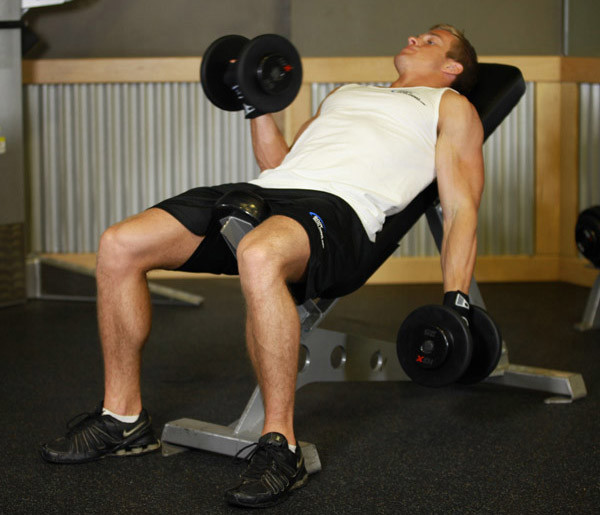
Other exercises for the gym
You can find out how to do a dumbbell press on an incline bench here.
Exercise for triceps – standing French press.
The lunge exercise for the buttocks and thighs is described at this link.
For those who are not good at pull-ups, read about Australian pull-ups.
Incline crunch exercise, here.
and
Technique for performing concentrated biceps curls.
If you want to pump up your biceps in the gym, 1 targeted workout per week is enough. As an option:
- lifting dumbbells;
- lifting the bar;
- practice on the Scott bench (9-12 repetitions).
Biceps exercises performed in the gym are done in a circle in 4 sets. Rest between them is half a minute. It is not recommended to dilute the complex with other techniques. Ideally, it is better to include the block in the main program, limiting it to the recommended number of takes of 3 sets.
The arms swing great on the horizontal bar. The advantage of the technique is the simultaneous pumping of 6 muscle groups: brachialis, forearm, biceps, abdominal muscles, back and chest. Pull-ups are combined with all types of loads and serve as a basic or additional exercise.

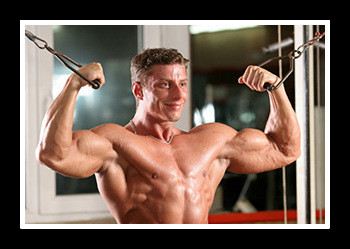
Leave a Comment